I'm writing a web app using react and webpack as my module bundler.
My jsx code is really light so far, the size of the entire folder is 25 kb.
My bundle.js created from webpack is 2.2 mb though. After running the optimization with the -p flag, it reduces the bundle to 700kb, which is still extremely big.
I have looked into the react.min.js file and its size is 130kb.
Is it possible that the webpack produces such big files or am I doing something wrong?
webpack.config.js
var path = require('path');
var webpack = require('webpack');
module.exports = {
entry: './public/components/main.jsx',
output: {
path: __dirname + "/public",
filename: 'bundle.js'
},
module: {
loaders: [{
test: /.jsx?$/,
loader: 'babel-loader',
exclude: /node_modules/,
query: {
presets: ['es2015', 'react']
}
}, {
test: /\.css$/,
loader: "style!css"
}]
}
};
EDIT
package.json:
{
"name": "XChange",
"version": "0.0.0",
"private": true,
"scripts": {
"start": "node ./bin/www"
},
"main": "./bin/www",
"devDependencies": {
"body-parser": "~1.13.2",
"cookie-parser": "~1.3.5",
"debug": "~2.2.0",
"express": "~4.13.1",
"jade": "~1.11.0",
"morgan": "~1.6.1",
"serve-favicon": "~2.3.0",
"react-dom": "~0.14.3",
"react": "~0.14.3",
"webpack": "~1.12.9",
"babel-loader": "~6.2.0",
"babel-core": "~6.2.1",
"babel-preset-react": "~6.1.18",
"babel-preset-es2015": "~6.1.18",
"react-bootstrap": "~0.28.1",
"material-ui": "~0.14.0-rc1",
"history": "~1.13.1",
"react-router": "~1.0.2",
"style-loader": "~0.13.0",
"css-loader": "~0.18.0"
},
"dependencies": {
"express-validator": "~2.18.0",
"mongoose": "~4.2.9",
"kerberos": "~0.0.17",
"bcrypt": "~0.8.5"
}
}
